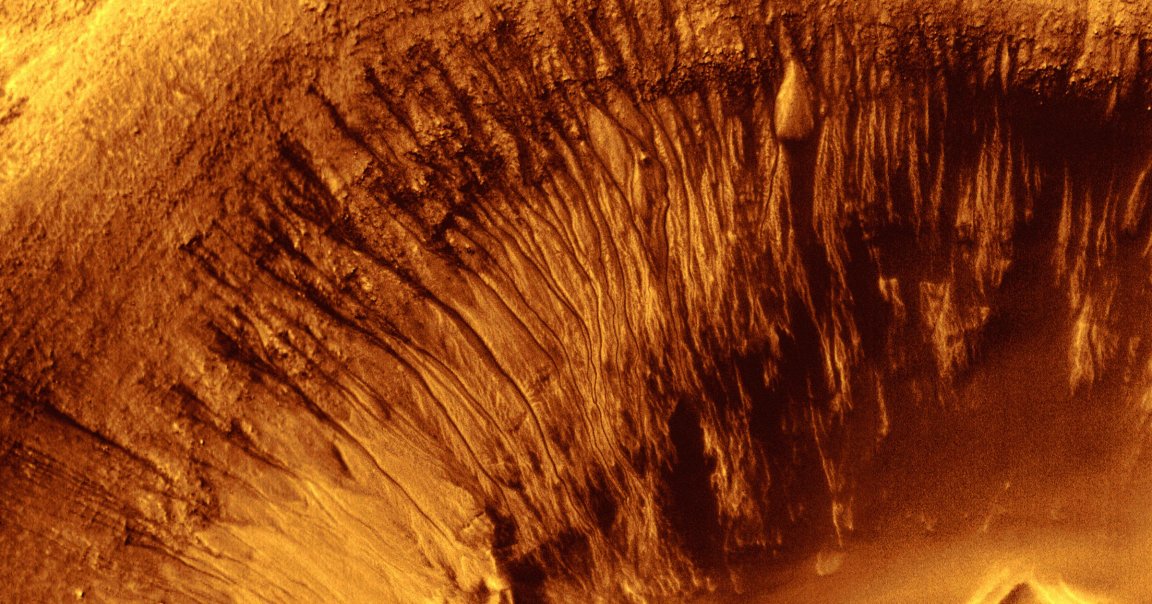
Networks of narrow channels lining the surface of Martian dunes, called “gullies,” have puzzled astronomers for decades.
At first, researchers suggested they were formed by liquid water billions of years ago, around the time when the Red Planet was suspected to be teeming with massive networks of rivers and lakes. Since then, observations by NASA’s Mars Reconnaissance Orbiter (MRO) led scientists to believe they were instead formed by the seasonal freezing of carbon dioxide.
Now, as detailed in a new paper published in the journal Geophysical Research Letters, Utrecht University Earth scientist Lonneke Roelofs took it upon herself to put that latter theory to the test by simulating the conditions of Mars in a lab to observe how blocks of carbon dioxide “dug” their way through the pseudo-regolith.
“It felt like I was watching the sandworms in the film ‘Dune,'” she said in a statement.

It’s a particularly fascinating theory because there’s no known equivalent phenomenon here on Earth. For these blocks of CO2 ice to form on the surface of dunes, temperatures first have to drop to a bitter -184 degrees Fahrenheit during winter on Mars.
Once temperatures start to rise towards the end of winter, the theory is that some of these blocks of CO2 ice, which can measure up to three feet in length, can break off, kicking off the “burrowing” behavior. Thanks to the enormous temperature differentials between the warming dunes and frigid ice blocks, the gas on the underside of them might even sublimate, effectively causing them to “explode.”
By tapping Open University’s “Mars chamber,” which can simulate the harsh environment of the Red Planet, Roelofs and her colleagues attempted to replicate the phenomenon here on Earth.
“In our simulation, I saw how this high gas pressure blasts away the sand around the block in all directions,” Roelofs said in the statement.
As a result, the block digs itself into the dune, only to repeat the process, causing it to gradually slide down, and leaving a gully behind.
“We tried out various things by simulating a dune slope at different angles of steepness,” Roelofs said. “We let a block of CO2 ice fall from the top of the slope and observed what happened. After finding the right slope, we finally saw results. The CO2 ice block began to dig into the slope and move downwards just like a burrowing mole or the sandworms from ‘Dune.'”
“It looked very strange,” she added.
Nothing, except for a small ditch, is left behind once temperatures rise enough in the early spring.
“Once the blocks reach the bottom of the slope and stop moving, the ice continues to sublimate until all the CO2 has evaporated,” Roelofs explained. “What remains is a hollow in the sand at the bottom of the dune.”
Besides the draw of probing the history of Mars for evidence of extraterrestrial life, a pursuit that has fascinated scientists for well over a century, the latest findings could help us make new discoveries back home as well.
Roelofs said that by “conducting research into the formation of landscape structures of other planets,” we can step “outside the frameworks used to think about Earth.”
“This allows you to pose slightly different questions, which in turn can deliver new insights for processes here on our planet,” she concluded.
More on Mars: Now That NASA Found Signs of Life on Mars, It’s Clear Trump Made a Massive Error